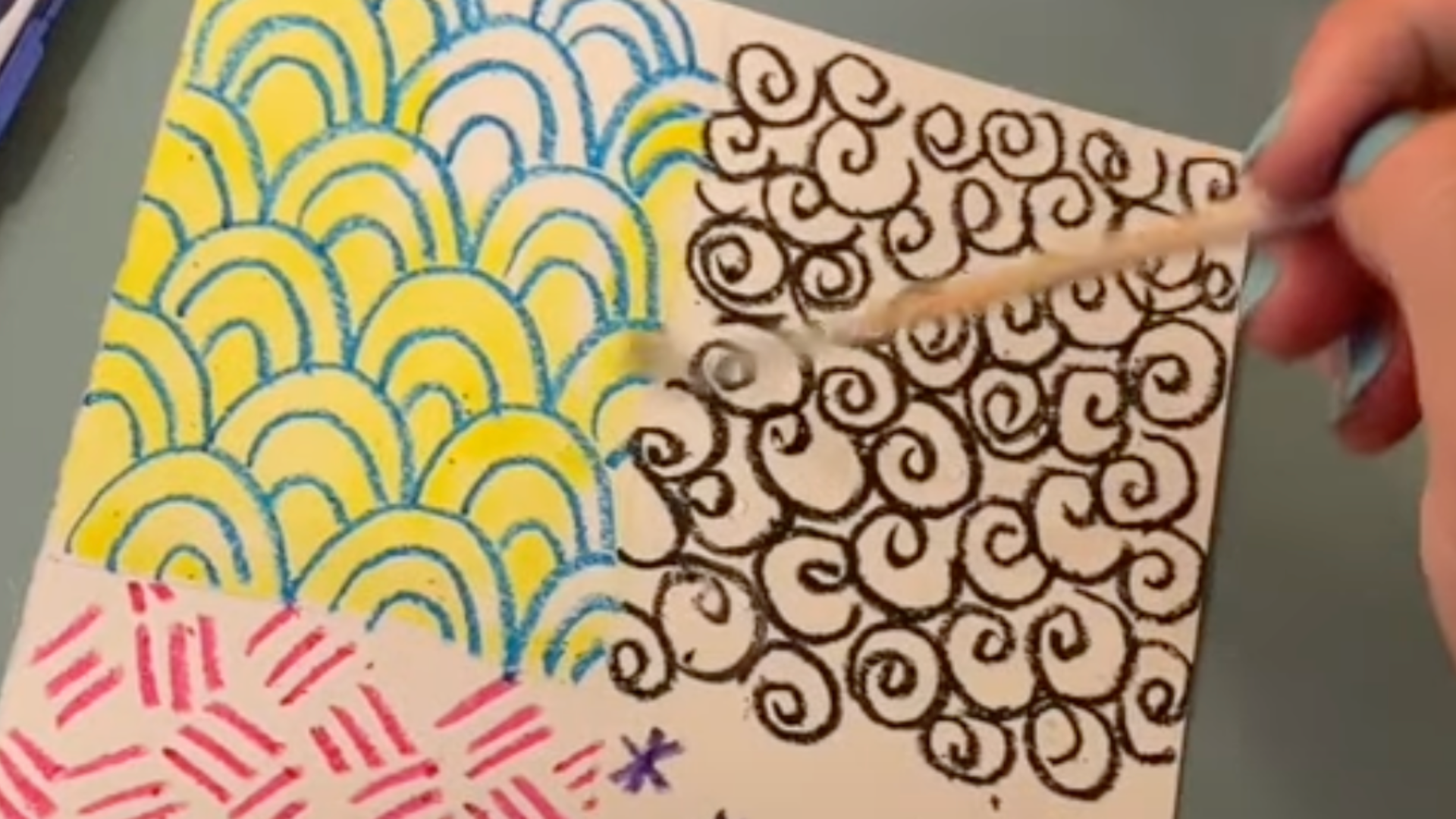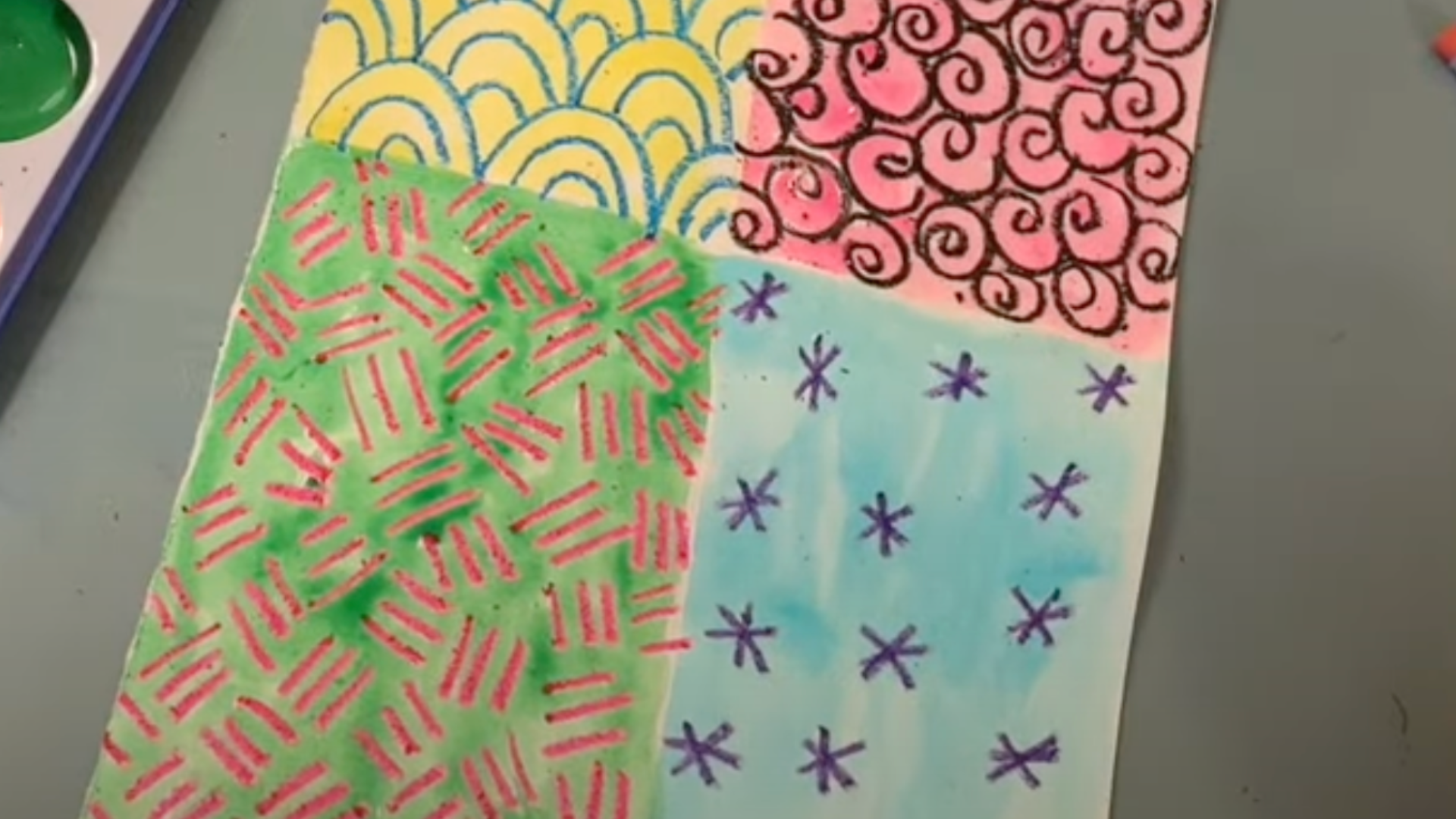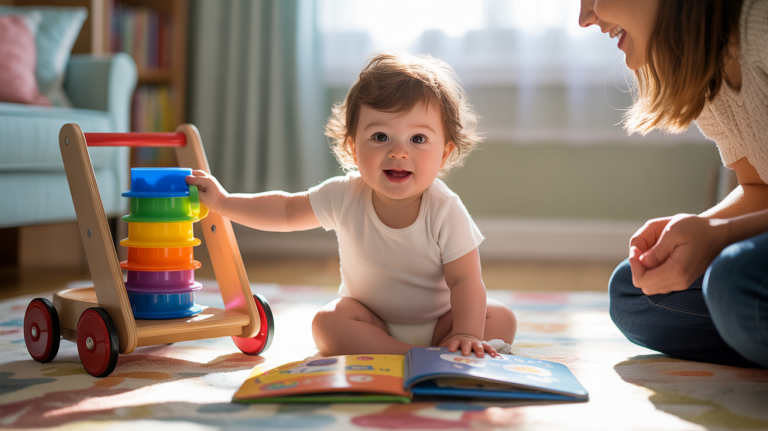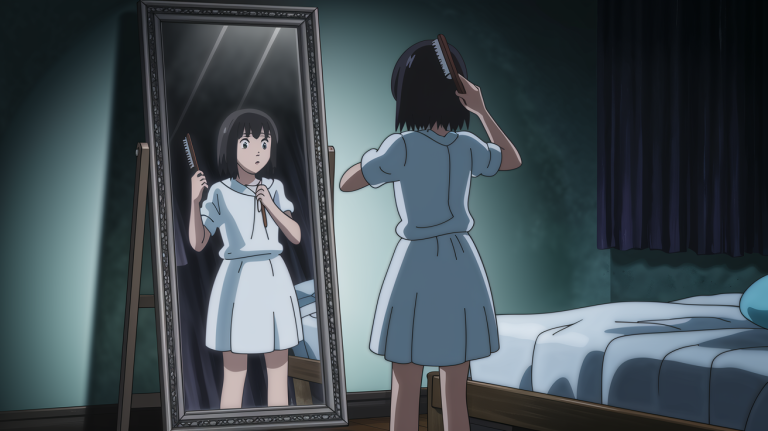What is Crayon Resist Art and How Can You Try It?

Ever noticed how crayons and water don’t mix? That’s the magic behind crayon resist art!
This simple but eye-catching technique uses wax’s natural repelling of water to create stunning designs when you add watercolors over crayon drawings.
Something pretty cool happens: the paint slides right off the waxy parts, creating beautiful patterns.
The best part? You probably have everything you need at home already. Crayons, paper, and some watercolors are all it takes to transform a basic drawing into something special.
Perfect for rainy afternoons or when the kids need something fun to do, crayon-resist art brings out everyone’s creative side. Fancy art skills are not required!
What is Crayon Resist Art?
Crayon-resist art is a creative technique in which you use crayons and water-based paint or ink together to make unique artwork.
First, you draw with waxy crayons on paper. Then, when you paint over the drawing with water-based paint, the paint doesn’t stick to the waxy crayon marks.
Instead, the crayon “resists” the paint, so those areas stay bright and visible while the paint colors the rest of the paper. This creates interesting patterns and textures that make the artwork stand out.
-
Uses crayons made of wax and water-based paint or ink
-
Crayon wax repels the water-based paint, preventing it from covering crayon marks
-
The “resist” effect happens because wax and water don’t mix
-
Results in unique textures and patterns where crayon colors show through
-
Popular for adding contrast and creative impact in paintings
The History and Popularity of Crayon Resist Art

Crayon resist art has long been used in education to teach kids about colors, textures, and painting techniques. Its origins stem from classroom creativity, where teachers combined crayons and water-based paint for striking effects.
Over time, this technique gained popularity in art therapy, helping people of all ages express themselves and relax. Its appeal lies in its accessibility and fun, allowing both beginners and experienced artists to create vibrant, textured artwork.
-
Originated mainly as a classroom art technique to explore color and texture
-
Widely used in schools to teach kids painting and drawing skills
-
Popular in art therapy for encouraging creativity and relaxation
-
Simple materials make it accessible for all ages and skill levels
-
Continues to be a favorite for its unique resist effect and artistic possibilities
Materials Needed for Crayon Resist Art

To create crayon-resist art, you need a few simple materials. Start with wax crayons, using either white or colorful ones based on your design.
Choose watercolor paints or diluted water-based ink to paint over the crayon drawings, using watercolor paper or any heavy paper that can hold wet paint without tearing.
You’ll need paintbrushes of various sizes and a cup of clean water for rinsing them.
For best results, select high-quality crayons with rich wax and smooth watercolor paints that spread evenly. Thick paper helps prevent warping and makes your artwork last longer.
-
Wax crayons (white or colored) for drawing
-
Watercolor paints or diluted water-based ink for painting
-
Watercolor paper or heavy, sturdy paper to hold the paint
-
Paintbrushes in various sizes for detail and washes
-
Clean water for rinsing brushes and thinning paint
-
Tips: Choose high-quality crayons and thick paper for vibrant colors and durability
How to Try Crayon Resist Art: Step-by-Step Guide
Unleash creativity with this fun and easy technique that reveals vibrant designs beneath watercolor washes. Follow these simple steps to make your magical resist masterpiece.
Step 1: Color Your Paper with Crayons

Color your paper fully with wax crayons, pressing firmly so you coat the paper with a thick wax layer to create a strong resist effect.
The artist suggests practicing patterns like mermaid scales, stars, spirals, or twisting lines to enhance visual interest and texture in your artwork.
Step 2: Paint Gently Over the Crayon Drawing with Watercolors

Next, take your watercolor paint and a soft brush. Instead of scooping paint heavily, gently swirl or “dance” your brush on the surface, applying the paint lightly over your crayon drawing.
This careful approach helps preserve the wax and prevents the paper from warping.
Step 3: Watch the Resist Effect Appear

As the watercolor paint dries, you’ll notice the crayon lines and patterns “resisting” the paint, revealing bright and bold designs underneath.
This effect works because the wax prevents the watercolor from soaking into the paper in those areas.
Step 4: Dry and Add Finishing Touches

Once your artwork is dry, you can add extra details with more crayons or paint if you want. This is your chance to personalize and perfect your piece.
When done, display your art proudly—whether framed or on the fridge!
Video Tutorial
Special thanks to Mollie Ahlers for the original crayon resist art tutorial and inspiration. Their clear explanations and creative ideas made this project accessible and fun for artists of all ages.
Creative Ideas and Variations to Try
Crayon resist art offers endless ways to get creative and make your artwork truly unique. Here are some fun ideas and variations to try that will keep your projects fresh and exciting:
-
Use a white crayon on white paper to create hidden designs that appear only when painted over
-
Layer multiple crayon colors before adding watercolor for vibrant, textured effects
-
Combine crayon resist with collage by adding paper cutouts or mixed media elements
-
Create seasonal-themed art like snowflakes, flowers, or Halloween shapes to match the time of year
-
Experiment with different patterns and shapes to develop your signature style
-
Try using different types of water-based paints or inks for varied textures and finishes
Troubleshooting Common Issues

When trying crayon resist art, you might run into a few common problems that can affect your results. Luckily, most of these issues have simple fixes to help you create beautiful artwork with ease.
-
Paint does not clearly show the resist effect: Make sure you press firmly with the crayons to lay down a thick wax layer. Light or uneven crayon coverage can make the resist less visible.
-
Crayons not working well: Use real wax crayons rather than oil pastels or cheap crayons with little wax content. Wax crayons create the best resist effect because of their water-repelling properties.
-
Paper wrinkling or tearing: Use watercolor paper or heavy, sturdy paper that can handle wet paint without warping. Avoid soaking the paper with too much water—apply paint gently and in thin layers.
-
Paint smudging or mixing unintentionally: Let each painted area dry completely before adding more paint or layers. Patience helps prevent colors from bleeding together and keeps your design sharp.
Where to Find Inspiration and More Resources

Numerous resources are available online and offline for exploring crayon-resist art ideas and enhancing your skills.
Online galleries and Pinterest showcase creative examples to inspire you, while YouTube tutorials offer easy, fun step-by-step videos.
Art education websites offer free guides, lesson plans, and project ideas to facilitate deeper learning.
For hands-on experience, consider art kits or books focused on resist techniques or watercolor art, which include all necessary materials and instructions.
1. Browse Pinterest boards: Find Vibrant Pinterest boards filled with crayon resist art to spark your creativity. From simple rainbows to intricate patterns, you’ll find endless ideas for all ages.
2. YouTube channels: Artwork inspired by Art for Kids Hub – a family-friendly YouTube channel that teaches step-by-step drawing, painting, and crafting tutorials for kids.
3. Visit art education sites: The Artful Parent is a go-to resource for nurturing creativity through simple, joyful art activities for kids.
4. Art books: The Usborne Complete Book of Art Ideas features over 400 art ideas, including crayon resist projects using watercolor, ink, and wax techniques.
5. Crayon Resist Art Kits: Crayon resist art kits come with pre-selected materials, such as watercolor paper, crayons, and paints, making it easy for kids to jump right into the fun.
Conclusion
Crayon resist art brings a touch of magic to your craft table. The way colors pop against those waxy lines never gets old, even for grown-ups!
It’s simple enough for little hands but still fun for anyone looking to add some creative joy to their day. The best part? You probably have everything you need sitting in a drawer right now.
So grab those crayons, find some paper, and see what happens when water meets wax. Each piece turns out unique, just like the person making it.
Why not try it this weekend? Your walls could use some fresh art, and your mind could use a break.
What colors will you pair together? Share your creations in the comments or check out our other easy art ideas for more inspiration!






